Eat, eat, eat! Is there anything better than this? Besides the fact of providing satiety, the habit of eating allows experiencing new flavors and, even more, knowing the very identity of a people.
A nation's identity is made up of two important elements – language and food culture. This one, in particular, brings important markers, such as the types of ingredients used, the emblematic dishes and even the social position of those who consumed them throughout history.
see more
Astrology and genius: THESE are the 4 most brilliant signs of…
iPhones that didn't succeed: 5 launches rejected by the public!
It's no wonder that Unesco declared typical dishes as an intangible heritage of a people! Want some examples? Our cuisine, so rich and diverse! Or, Mediterranean food, with its diversity of ingredients and influences. Even more, the Spanish one, with striking flavors and extremely varied elements!
Speaking of which, how about getting to know a little more about the spanish cuisine, its typical dishes, differences between regions and the most used items?
Spain is an extremely diverse country and, like most European nations, has centuries of history. Over the years, the territory has been inhabited by different peoples who, obviously, brought and left a bit of their own customs and culture.
The Greeks, for example, introduced olive and olive oil. The Arabs and Moors contributed rice, nuts, fruits and spices (cinnamon, nutmeg and saffron). Therefore, we can say that the varied Spanish cuisine reflects the country's history and the influence suffered by various cultures.
Brazilians, in general, love Spanish food and you know why? Just like us, the Spaniards love to diversify their dishes, so cuisine can vary depending on the region visited. Despite this, some techniques and ingredients are common to all, such as the use of olive oil, garlic, onion and bread as a side dish.
The habit of sautéing food and eating salads during the summer is also something that can be seen all over Spain. Oh, and jamón, the famous Spanish ham, is that “joker” ingredient in most recipes.
In addition to the influence of neighboring countries, Spanish cuisine is characterized by its variations between its regions. So, to familiarize yourself with the names and dishes found throughout the country, find out what they are:

The most common ingredients in Spanish dishes are olive oil, garlic and onion, as well as bread, sangria, beer and wine to accompany it. On Spanish tables, there is usually no shortage of seafood, chorizo (prepared with meat and fat), jamón serrano, sofrito (sautéed with onions and tomatoes) and cheeses.
1. spanish paella

This is undoubtedly one of the best known dishes in Spain. Paella was created by Valencian peasants who went out to work with the food that would sustain them throughout the day. They mixed rice, oil and salt with the leftovers, vegetables and game they could find, preparing everything in a round pot with handles called…palla.
Its basic ingredients remain the same, just adding saffron, but the popularization of the term has led to the addition of other items, such as shrimp, squid, octopus and mussels. Gradually, the typical Valencian dish gained territory and reached the coast, spreading throughout the country.
2. spanish tapas
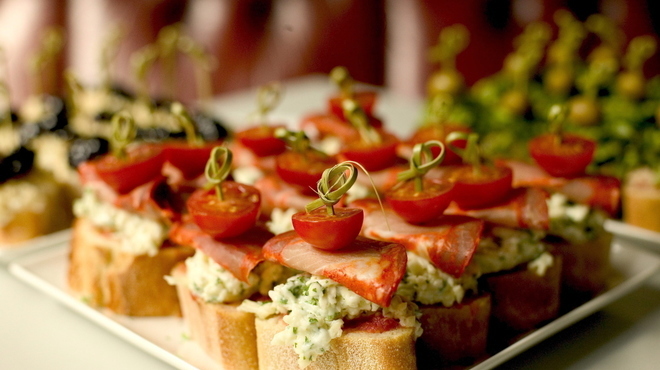
You, for sure, must have heard about Spanish tapas! A very simple recipe suddenly took on a life of its own due to the variations found in different parts of Spain. And do you know how they came about? Legend has it that young Spaniards gathered in bars and were annoyed by mosquitoes settling on their glasses.
Therefore, they used to “cover” them with toast. But, someone had the brilliant idea of covering the buns with cheese and other delights. Thus, Spain's most famous accompaniment was born. There are those who say that tapas actually appeared in the reign of Alfonso X, El Sabio.
It is said that he was recommended to cure an illness by drinking a few glasses of wine. To soften the effects of alcohol, he ate small pieces of food between sips. Another theory states that the large number of accidents caused by drunken carters forced tavern keepers to serve aperitifs with wine or beer.
However, they came on a plate placed over the glass and customers could only drink after eating the snacks. Anyway, regardless of its origin, don't even think about having something without a good “tapa” nearby! The most common are patatas bravas, squid, ham, shrimp and cheese.
3. Piston

A simple and delicious dish, pisto is prepared according to the region, as well as the time of year. That's because your recipe takes several fried vegetables accompanied by a fried egg. That simple!
4. Galician octopus

The Galician octopus is a simple recipe that originated in the region of Galicia and, therefore, is found in street markets. Served on a wooden plate, the octopus is cooked whole and then cut into slices to be sprinkled with salt, pepper and olive oil.
5. Madrileño stew
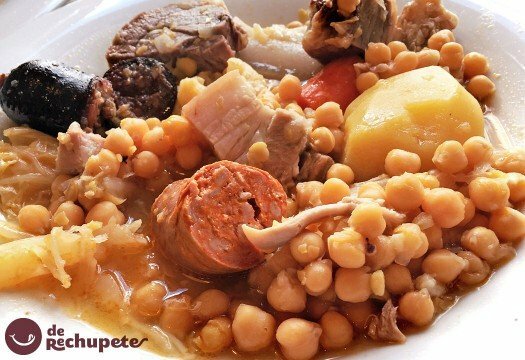
As the name implies, cocido madrileño is one of the most popular dishes in the Spanish capital, Madrid. The main ingredient in the recipe is chickpeas, but the dish is very hearty and has chard, chicken, sausage, potatoes, cabbage, green beans, broth and other items.
6. Arrows a la Plancha with Jamon

Jamón, as we have already mentioned, is one of the most consumed spices in Spain. Setas a la plancha are a kind of starter that includes grilled mushrooms, olive oil and ham.
7. tortilla de patata

Another typical Spanish dish that has some variations around the world. The tortilla de patata is very similar to our omelette and is made of….eggs and potatoes! But, like Brazilians, Spaniards love to invent and the recipe changes according to the region where it is prepared. Therefore, do not be surprised if your order comes with sausage, onion, peppers and mushrooms.
Normally, the potato is cooked in olive oil in advance, giving the dish a very special flavor. Oh, and if you're in Madrid, try the tortilla brava, which takes on a spicy flavor thanks to the addition of paprika.
8. Ribs of Cerdo al Ajillo with Patatas

The deadline is typical of the regions of León and Asturias. The recipe indicates breaking the pork ribs into pieces and then marinating them in white wine, coarse salt and garlic cloves. Then just cook them in the iron pan.
9. Fabada Asturiana

The typical dish from the Asturias region is usually eaten in winter because it is a little heavier. Preparation begins the day before when white beans are cooked for three hours with a whole onion, olive oil, saffron and peppers. Then just add raw and smoked pork.
There are those who say that the Asturian fabada should be accompanied by beer, others with cider and, still, a good wine. The fact is the dish is delicious and cannot fail to be tasted.
10. gazpacho

Gazpacho is very popular in Spain, especially in the south (Murcia, Andalusia and Valencia) and has ended up spreading to some regions of Portugal. Cold soup is prepared with simple ingredients such as cucumber, garlic, tomato and others. Once again, the recipe can vary according to the region and has different names, such as Gazpacho from Andalusia, from Extremadura or from la Mancha.
11. Mejillon Gallego
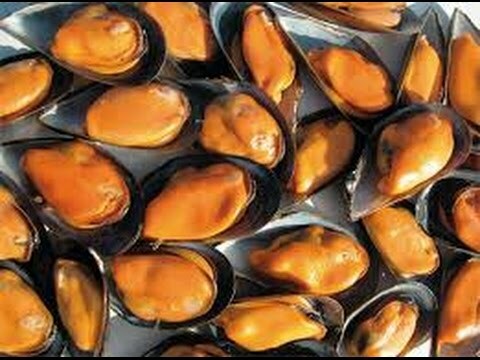
Created in the region of Galicia, the dish uses mussels captured on the north coast of Spain. Experts comment that they are among the best in the world and the recommendation is that restaurants serve them very fresh so as not to lose their original flavor.
12. Patatas Bravas
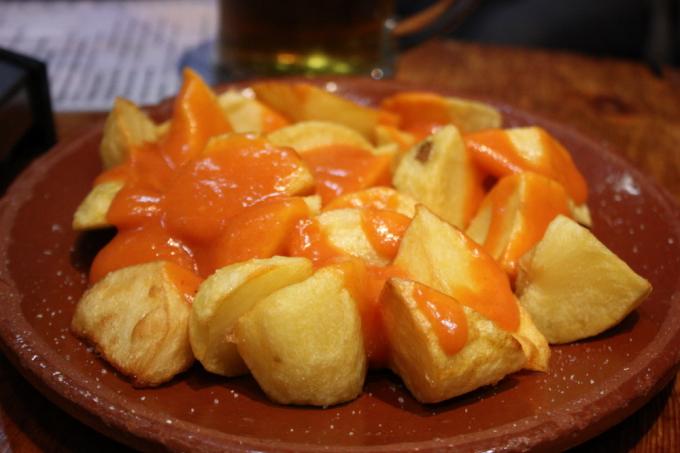
Patatas bravas are nothing more than cut potatoes that are fried and seasoned with a spicy tomato sauce. The dish is one of the most requested tapas in Spanish bars.
1. Turrón de Alicante
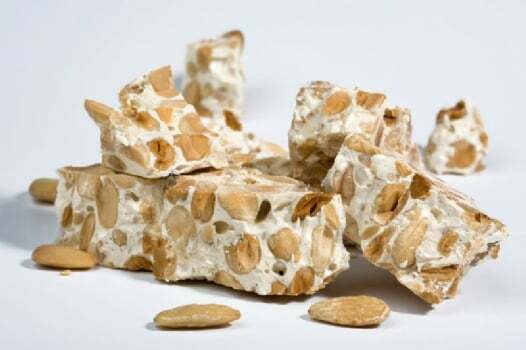
The flavor of this typical sweet from the Alicante region is well known to us Brazilians. Nougats are nothing more than a caramel paste made with egg whites and peanuts. You can find them at popular festivals and pilgrimages.
2. rice with milk

Our well-known rice pudding made with rice cooked in water, milk and cinnamon.
3. churros
The dessert was born in the Iberian region and is made with wheat flour dough fried in oil. The recipe arrived in South America thanks to colonization and, around here, it usually has different fillings, such as dulce de leche and chocolate.
4. Magdalene

They are soft dumplings prepared with eggs, flour, yeast, sugar and butter.
5. Polvoron

The polvorón is a sweet buttery biscuit typical of the regions of Andalusia, Seville, Castilla y Léon. Much appreciated at Christmas parties, it has a simple recipe made with wheat flour, shelled almonds, refined sugar, pork fat and cinnamon. But, there are more elaborate preparations that take cherry, chocolate and grated coconut.
6. torrijas

Torrijas are for the holy holidays as french toasts are for Christmas. The candy emerged as a food suitable for the recovery of pregnant women and has a very simple recipe – slices of stale bread breaded with eggs, wine or milk and fried in oil. If you prefer, you can cover the slices with sweet syrup or cinnamon.
